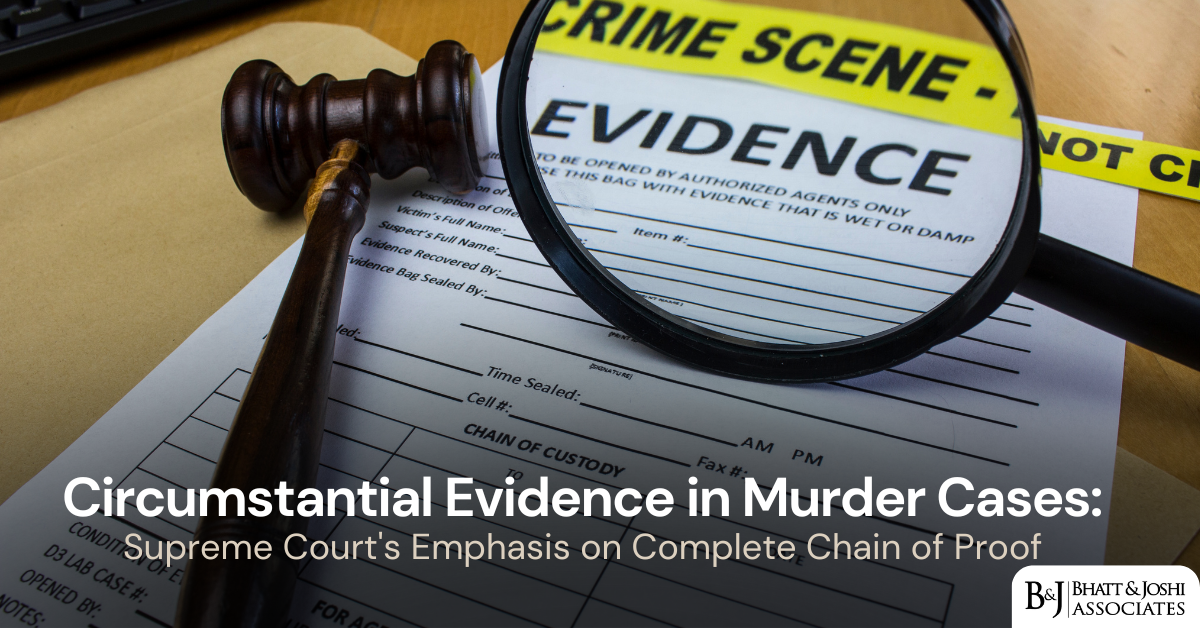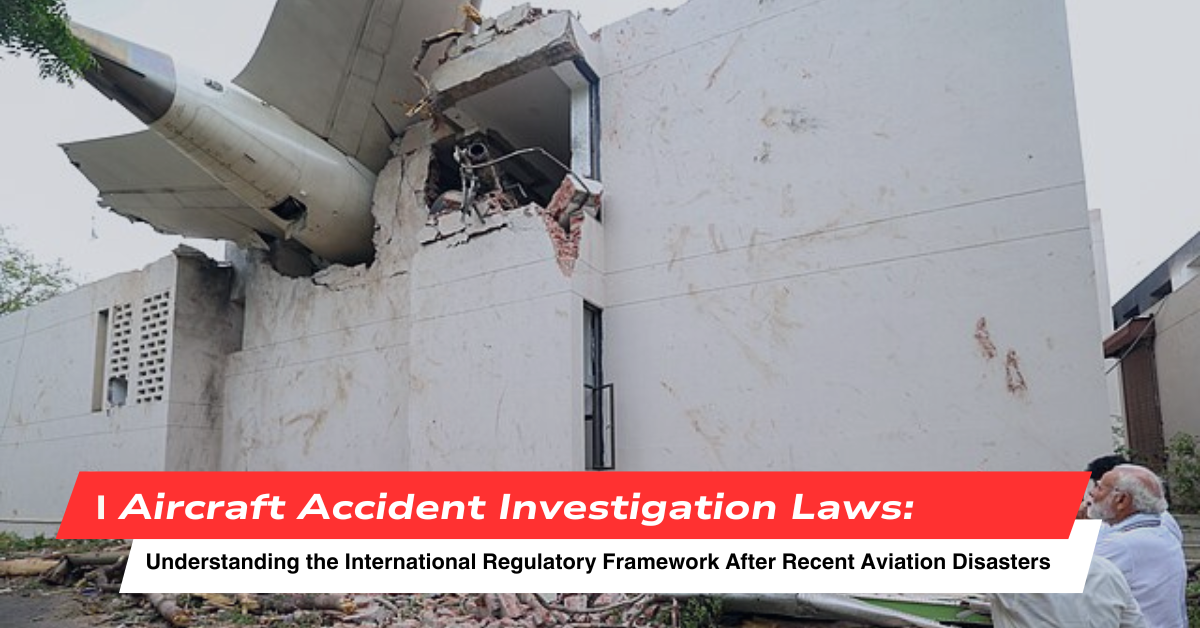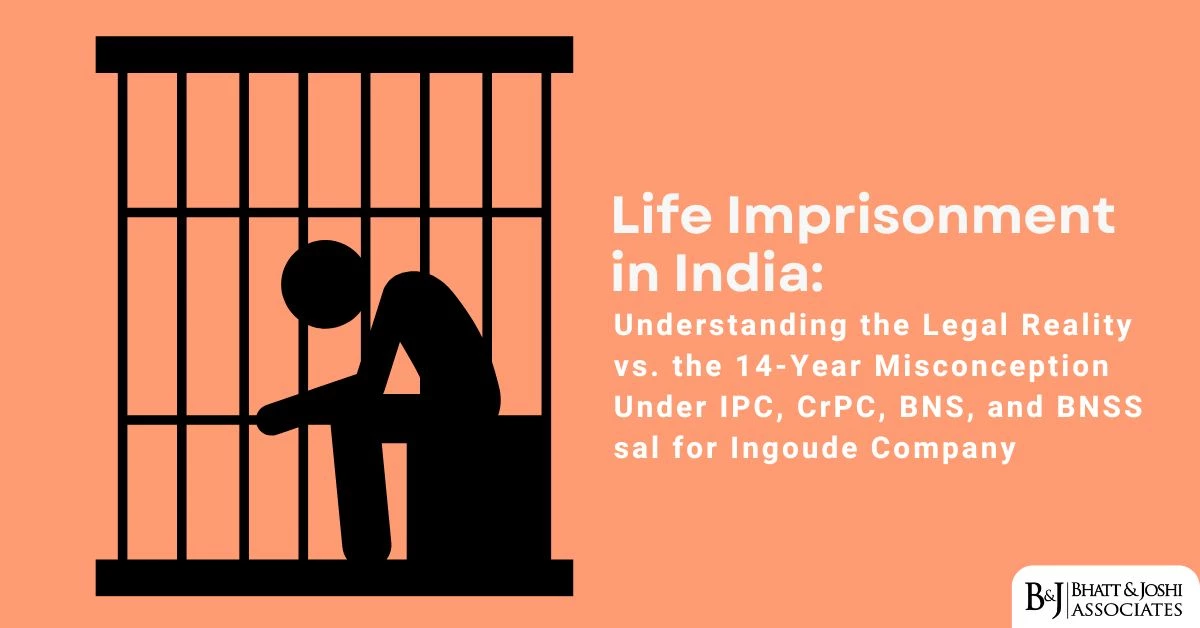Introduction
The Supreme Court of India has once again reinforced the foundational principle that mere recovery of a blood-stained weapon, even bearing the same blood group as the deceased, is insufficient to establish guilt in murder cases. In the landmark judgment of State of Rajasthan v. Hanuman, a bench comprising Justice Sandeep Mehta and Justice Prasanna B. Varale dismissed the State’s appeal challenging the acquittal of a murder accused, emphasizing that circumstantial evidence must form a complete and unbroken chain to sustain a conviction [1].
This judgment represents a significant reaffirmation of the rigorous evidentiary standards required in criminal prosecutions based on circumstantial evidence, particularly in cases involving allegations of murder under Section 302 of the Indian Penal Code, 1860. The decision underscores the judiciary’s commitment to ensuring that convictions are based on proof beyond reasonable doubt rather than mere suspicion or incomplete evidence.
The case demonstrates the critical distinction between evidence that creates suspicion and evidence that establishes guilt beyond reasonable doubt, reinforcing the fundamental principle that the prosecution must prove every link in the chain of circumstances to secure a conviction in cases resting entirely on circumstantial evidence.
Legal Framework for Circumstantial Evidence
Constitutional and Statutory Foundation
The Indian legal system’s approach to circumstantial evidence is grounded in constitutional principles of due process and the presumption of innocence. Article 20(3) of the Constitution guarantees that no person accused of an offence shall be compelled to be a witness against himself, while Article 21 ensures that no person shall be deprived of life or personal liberty except according to procedure established by law [2].
The evidentiary framework is primarily governed by the Indian Evidence Act, 1872 (now replaced by the Bharatiya Sakshya Adhiniyam, 2023), which defines evidence under Section 3 as comprising all statements which the court permits or requires to be made before it by witnesses in relation to matters of fact under inquiry, and all documents including electronic records produced for the inspection of the court [3].
The Panchsheel of Circumstantial Evidence
The Supreme Court has consistently followed the five golden principles (Panchsheel) established in Sharad Birdhichand Sarda v. State of Maharashtra (1984) for cases based on circumstantial evidence [4]. These principles require that:
- Complete Establishment of Circumstances: The circumstances from which the conclusion of guilt is to be drawn should be fully established through credible evidence.
- Consistency with Guilt Hypothesis: The facts so established should be consistent only with the hypothesis of the guilt of the accused, meaning they should not be explainable on any other reasonable hypothesis except that the accused is guilty.
- Complete Chain Formation: The circumstances taken cumulatively should form a chain so complete that there is no escape from the conclusion that within all human probability, the crime was committed by the accused and no one else.
- Exclusion of Innocent Hypothesis: The established circumstances should be incapable of explanation on any hypothesis other than that of the guilt of the accused and inconsistent with his innocence.
- Unerring Direction toward Guilt: The circumstances should be of a definite tendency unerringly pointing towards the guilt of the accused.
Case Analysis: State of Rajasthan v. Hanuman
Factual Background and Procedural History
The case originated from the murder of Chotu Lal on the intervening night of March 1-2, 2007. Initially, FIR No. 37 of 2007 was registered against unknown persons. Subsequently, the respondent Hanuman was implicated based on suspicion and circumstantial evidence. The prosecution built its case on two primary pillars: alleged motive and the recovery of a blood-stained weapon.
- Trial Court Proceedings: The Additional Sessions Judge, Fast Track Court, Kota, in Sessions Case No. 63 of 2007, convicted the accused on December 10, 2008, under Section 302 of the Indian Penal Code and sentenced him to life imprisonment along with a fine of ₹100, with an additional three months’ simple imprisonment in default of payment.
- High Court Decision: The Rajasthan High Court, in its judgment dated May 15, 2015, found the prosecution’s case lacking and held that the evidence did not form a complete and unbroken chain necessary for conviction based solely on circumstantial evidence. The High Court accordingly set aside the conviction and acquitted the respondent.
Prosecution’s Case Theory
The prosecution’s case rested on two main circumstances:
- Alleged Motive: The prosecution contended that the accused had an “evil eye” on the deceased’s wife, suggesting a personal animosity that could have motivated the crime. However, the evidence supporting this motive was found to be vague and inconsistent.
- Recovery of Weapon: The prosecution relied heavily on the recovery of a blood-stained weapon allegedly at the instance of the accused. The Forensic Science Laboratory (FSL) report confirmed that the weapon tested positive for blood group B+, which matched the deceased’s blood group.
Supreme Court’s Analysis and Reasoning
The Supreme Court’s analysis focused on whether these circumstances, individually or collectively, could establish guilt beyond reasonable doubt.
- Evaluation of FSL Evidence: The Court observed that “even if the FSL report is taken into account, other than the fact that the weapon recovered at the instance of the accused tested positive for the same blood group as that of the deceased (B+ve), nothing much turns on the said report.” This statement reflects the Court’s understanding of the limitations of blood group analysis in forensic identification.
- Precedential Support: The Court relied on its earlier decision in Raja Naykar v. State of Chhattisgarh (2024) 3 SCC 481, where it was held that “mere recovery of a blood-stained weapon even bearing the same blood group of the victim would not be sufficient to prove the charge of murder” [5].
- Assessment of Motive: The Court found the alleged motive to be insufficiently established, noting that the prosecution’s evidence was vague and inconsistent. The Court emphasized that in circumstantial evidence cases, motive assumes great significance and must be clearly established.
- Standard of Review in Appeals Against Acquittal: The Court reiterated the well-established principle that in appeals against acquittal, interference is only warranted if the view taken by the High Court is wholly unsustainable and no other conclusion is possible based on the evidence.
Scientific Limitations of Blood Group Analysis
Historical Context of Forensic Serology
Blood group typing has been used in forensic investigations since the early 20th century, with the first documented use in 1902 when a doctor in Lyon, France, relied on blood evidence to determine the guilt of a suspect in a murder case [6]. The introduction of the ABO blood group system by Karl Landsteiner revolutionized forensic serology, providing investigators with a tool to include or exclude suspects.
However, the evidentiary value of blood group analysis has significant limitations that courts must consider:
- Limited Discriminatory Power: Blood group analysis can only exclude individuals but cannot positively identify a specific person. Multiple individuals within a population share the same blood group, making it impossible to establish individual identity through blood typing alone.
- Population Frequency: Blood group B+ is found in approximately 8-10% of the Indian population, meaning millions of individuals could theoretically be the source of such blood evidence.
- Degradation and Contamination: Blood evidence can degrade over time or become contaminated, potentially affecting the reliability of testing results.
Modern Forensic Standards
Contemporary forensic science has largely moved beyond simple blood group typing to more sophisticated DNA analysis, which provides significantly higher discriminatory power [7]. Courts have recognized that blood typing cannot provide the same level of individual identification as DNA testing, which can establish identity with statistical probabilities in the range of one in several billion.
The Supreme Court’s observation that “nothing much turns on” the FSL report showing matching blood groups reflects this understanding of the limited probative value of such evidence in establishing individual guilt.
Precedential Framework and Judicial Consistency
The Raja Naykar Precedent
The Supreme Court’s reliance on Raja Naykar v. State of Chhattisgarh demonstrates judicial consistency in applying evidentiary standards. In Raja Naykar, the Court emphasized that securing a conviction necessitates more than mere suspicion and that the prosecution bears the burden of unequivocally proving that the accused, and only the accused, committed the crime [8].
The Raja Naykar case established that strong suspicion cannot take the place of proof beyond reasonable doubt, and that circumstantial evidence must be subjected to rigorous scrutiny to ensure it forms a complete chain pointing unequivocally to guilt.
Evolution of Circumstantial Evidence Jurisprudence
The Indian judiciary’s approach to circumstantial evidence has evolved through several landmark cases:
- Hanumant v. State of Madhya Pradesh (1952): One of the earliest cases to establish principles for circumstantial evidence, emphasizing that circumstances must be consistent only with the guilt of the accused.
- Sharad Birdhichand Sarda v. State of Maharashtra (1984): Crystallized the five golden principles that continue to guide courts in evaluating circumstantial evidence cases.
- Recent Developments: Courts have increasingly emphasized the need for meticulous analysis of each link in the chain of circumstances, with several recent Supreme Court decisions setting aside convictions where the chain was found to be incomplete.
Burden of Proof and Standard of Evidence
Prosecution’s Burden in Circumstantial Evidence Cases
In cases based entirely on circumstantial evidence, the prosecution faces a heightened burden of proof. Unlike direct evidence cases where eyewitness testimony may suffice, circumstantial evidence requires the prosecution to establish multiple interconnected facts that collectively point to guilt beyond reasonable doubt.
The Supreme Court has consistently held that the prosecution must prove beyond reasonable doubt each of the incriminating circumstances on which it proposes to rely. This requires not only establishing individual circumstances but also demonstrating their collective significance in forming an unbroken chain of proof.
The “No Escape” Standard
The “no escape” standard established in Sharad Birdhichand Sarda requires that the chain of circumstances be so complete that there is no escape from the conclusion that the accused committed the crime. This standard is particularly stringent because it requires courts to consider not only whether the evidence supports guilt but also whether it excludes all other reasonable possibilities.
In the present case, the Supreme Court found that the prosecution failed to meet this standard, as the circumstances relied upon could not conclusively establish that the accused, and no one else, committed the murder.
Reasonable Doubt and Alternative Hypotheses
The doctrine of reasonable doubt assumes particular significance in circumstantial evidence cases. Courts must consider whether the established circumstances are capable of explanation on any hypothesis other than guilt. If alternative reasonable explanations exist, the prosecution has failed to prove its case beyond reasonable doubt.
The Supreme Court’s emphasis on the insufficiency of the evidence in the present case reflects this principle, as the recovered weapon and alleged motive, even when considered together, did not exclude other reasonable possibilities.
Forensic Evidence and Its Limitations
Understanding Forensic Science Laboratory Reports
FSL reports play a crucial role in criminal investigations, but courts must understand their limitations and interpret them correctly. The Supreme Court’s observation that “nothing much turns on” the FSL report reflects a sophisticated understanding of forensic evidence.
- Presumptive vs. Confirmatory Tests: Forensic serology involves both presumptive tests (which indicate the possible presence of blood) and confirmatory tests (which establish the definitive presence of blood). However, even confirmatory tests for blood presence do not establish individual identity [9].
- Statistical Significance: Blood group matching provides class evidence rather than individual evidence. While it can exclude suspects who do not share the same blood group, it cannot identify a specific individual among those who do share that blood group.
- Chain of Custody: The reliability of forensic evidence depends heavily on proper collection, preservation, and analysis procedures. Any break in the chain of custody can compromise the evidentiary value of forensic results.
Limitations of Traditional Forensic Methods
Traditional forensic methods like blood group typing have been largely superseded by more sophisticated techniques:
- DNA Analysis: Modern DNA profiling can establish individual identity with high statistical confidence, unlike blood group typing which only provides class characteristics.
- Improved Sensitivity: Contemporary analytical techniques can detect and analyze much smaller quantities of biological evidence than traditional methods.
- Quality Assurance: Modern forensic laboratories operate under strict quality assurance protocols and accreditation standards that were not available in earlier periods.
Judicial Approach to Acquittals in Circumstantial Evidence Cases
Standard of Review in Appeal Courts
The Supreme Court’s approach in this case reflects established principles governing appeals against acquittals. The Court emphasized that interference with an acquittal is justified only when the High Court’s view is wholly unsustainable and no other reasonable conclusion is possible based on the evidence.
This deferential standard recognizes that trial courts and High Courts, having heard witnesses and examined evidence firsthand, are better positioned to assess credibility and draw inferences from circumstantial evidence.
The “Only Possible View” Test
The Supreme Court applied the “only possible view” test, which requires that for an appellate court to interfere with an acquittal, the evidence must be so overwhelming that guilt is the only reasonable conclusion. In the present case, the Court found that innocence remained a reasonable possibility, thereby upholding the acquittal.
Protecting the Innocent
The judicial approach to circumstantial evidence cases reflects a fundamental commitment to protecting innocent persons from wrongful conviction. The stringent standards applied in such cases recognize that circumstantial evidence, while probative, carries inherent risks of misinterpretation or incomplete analysis.
The Supreme Court’s decision demonstrates that courts will not compromise on evidentiary standards even when dealing with serious crimes like murder, ensuring that convictions are based on solid proof rather than speculation or suspicion.
Implications for Legal Practice
Guidance for Prosecutors
The judgment provides important guidance for prosecuting agencies in building cases based on circumstantial evidence:
- Thorough Investigation: Prosecutors must ensure that investigations are thorough and that all relevant circumstances are properly established through credible evidence.
- Multiple Corroborating Circumstances: Reliance on a single piece of circumstantial evidence, however compelling, is insufficient. Multiple corroborating circumstances must be established to form a complete chain.
- Expert Evidence: Where technical evidence like forensic reports is involved, prosecutors must ensure that expert witnesses can explain the significance and limitations of such evidence to the court.
- Motive Establishment: In circumstantial evidence cases, motive assumes particular importance and must be clearly established through reliable evidence.
Considerations for Defense Counsel
Defense attorneys can draw several lessons from this judgment:
- Challenging Individual Links: Each link in the chain of circumstantial evidence should be rigorously challenged to expose weaknesses or gaps in the prosecution’s case.
- Alternative Hypotheses: Defense counsel should explore and present alternative reasonable explanations for the established circumstances.
- Expert Cross-Examination: Technical evidence like forensic reports should be subjected to careful cross-examination to highlight limitations and uncertainties.
- Burden of Proof: Defense counsel should consistently emphasize the prosecution’s burden to establish guilt beyond reasonable doubt and the inadequacy of mere suspicion.
Judicial Considerations
The judgment provides guidance for judicial officers handling circumstantial evidence cases:
- Meticulous Analysis: Each circumstance must be carefully analyzed to determine whether it has been properly established and what inferences can legitimately be drawn.
- Chain Completeness: Courts must assess whether the established circumstances form a complete chain that excludes all reasonable doubt about guilt.
- Scientific Evidence: Technical evidence must be evaluated with an understanding of its capabilities and limitations.
- Reasoned Judgments: Courts must provide detailed reasoning for accepting or rejecting specific pieces of evidence and explain how conclusions were reached.
International Perspectives on Circumstantial Evidence
Common Law Traditions
The Indian approach to circumstantial evidence draws from common law traditions while adapting to local conditions and constitutional requirements. Common law jurisdictions generally require that circumstantial evidence be compelling enough to exclude reasonable doubt about guilt.
- United States: American courts apply similar standards, requiring that circumstantial evidence be sufficient to support a finding of guilt beyond reasonable doubt. The “inference upon inference” rule cautions against drawing conclusions based on speculative inferences.
- United Kingdom: English courts have developed sophisticated approaches to circumstantial evidence, emphasizing the need for evidence that compels a conclusion of guilt rather than merely suggesting it.
- Canada: Canadian courts apply rigorous standards for circumstantial evidence, requiring that the evidence be consistent with guilt and inconsistent with any other rational conclusion.
Continental Legal Systems
Civil law jurisdictions approach circumstantial evidence differently, often with more structured analytical frameworks:
- France: French criminal procedure places greater emphasis on judicial investigation and less on adversarial presentation of evidence, but still requires that circumstantial evidence be compelling.
- Germany: German criminal procedure emphasizes the principle of free evaluation of evidence while requiring that judges be convinced of guilt beyond reasonable doubt.
Lessons for India
International experience suggests several areas where Indian practice could be further refined:
- Judicial Training: Enhanced training for judges on the evaluation of scientific evidence and statistical reasoning.
- Standardized Procedures: Development of more standardized approaches to the evaluation of circumstantial evidence.
- Expert Witness Standards: Improved standards for the qualification and testimony of expert witnesses in technical fields.
Recent Developments and Future Directions
Technological Advances in Forensic Science
The field of forensic science continues to evolve rapidly, with implications for how courts evaluate circumstantial evidence:
- Advanced DNA Analysis: New techniques allow analysis of degraded or mixed samples that were previously unusable.
- Digital Forensics: Electronic evidence is becoming increasingly important in criminal investigations.
- Statistical Analysis: Improved statistical methods for evaluating the significance of forensic evidence.
Judicial Training and Education
Recent Supreme Court decisions have emphasized the need for enhanced judicial training in the evaluation of scientific evidence. The Court has issued guidelines for lower courts on the proper evaluation of circumstantial evidence, emphasizing the need for careful analysis and reasoned decision-making [10].
Legislative Developments
The replacement of the Indian Evidence Act, 1872, with the Bharatiya Sakshya Adhiniyam, 2023, provides an opportunity to clarify standards for the evaluation of circumstantial evidence, though the fundamental principles remain unchanged.
Quality Assurance in Forensic Investigations
Laboratory Standards and Accreditation
The reliability of forensic evidence depends heavily on the quality of laboratory procedures and analysis. Modern forensic laboratories must meet stringent accreditation standards to ensure the reliability of their results.
- ISO/IEC 17025: International standard for testing and calibration laboratories, ensuring competence and reliability.
- Chain of Custody: Rigorous procedures for tracking evidence from collection to analysis to court presentation.
- Quality Control: Regular testing and validation of analytical procedures to ensure accuracy and reliability.
Expert Witness Qualifications
The qualification and testimony of expert witnesses in forensic matters has come under increased scrutiny:
- Professional Certification: Requirements for professional certification and continuing education for forensic experts.
- Scope of Testimony: Clear limitations on the scope of expert testimony to avoid overstatement of conclusions.
- Statistical Presentation: Proper presentation of statistical evidence to avoid misleading impressions about the significance of findings.
Conclusion
The Supreme Court’s decision in State of Rajasthan v. Hanuman represents a significant reaffirmation of the rigorous evidentiary standards required in criminal prosecutions based on circumstantial evidence. The judgment emphasizes that mere recovery of a blood-stained weapon, even bearing the same blood group as the deceased, is insufficient to establish guilt in murder cases without additional corroborating evidence forming a complete chain of proof.
The decision reflects the Court’s sophisticated understanding of the limitations of traditional forensic evidence and its commitment to ensuring that convictions are based on proof beyond reasonable doubt rather than speculation or incomplete evidence. The emphasis on the need for a complete and unbroken chain of circumstances serves to protect innocent persons from wrongful conviction while maintaining the integrity of the criminal justice system.
The judgment provides valuable guidance for all stakeholders in the criminal justice system. Prosecutors must ensure thorough investigations that establish multiple corroborating circumstances forming a complete chain of proof. Defense counsel should rigorously challenge each link in the chain of circumstantial evidence and explore alternative reasonable explanations. Judicial officers must carefully analyze each circumstance and ensure that conclusions are based on compelling evidence rather than suspicion.
The decision also highlights the importance of understanding the capabilities and limitations of forensic evidence. While forensic science has advanced significantly, traditional methods like blood group typing have inherent limitations that courts must consider when evaluating their evidentiary value. The move toward more sophisticated analytical techniques like DNA analysis reflects the ongoing evolution of forensic science and its application in criminal investigations.
Looking forward, the judgment underscores the need for continued improvement in forensic standards, judicial training, and legal practice. The criminal justice system must balance the need to prosecute crimes effectively with the fundamental requirement to protect innocent persons from wrongful conviction. The rigorous standards applied to circumstantial evidence cases serve this dual purpose by ensuring that convictions are based on solid proof while maintaining confidence in the justice system.
The Supreme Court’s decision ultimately reinforces the principle that in a civilized society, it is better for guilty persons to escape punishment than for innocent persons to be wrongfully convicted. This principle, reflected in the requirement for proof beyond reasonable doubt and the careful evaluation of circumstantial evidence, remains fundamental to the administration of criminal justice in India.
References
[1] State of Rajasthan v. Hanuman, Criminal Appeal No. 631 of 2017, Supreme Court of India, June 27, 2025. https://lawtrend.in/mere-recovery-of-blood-stained-weapon-matching-victims-blood-group-not-sufficient-to-prove-murder-supreme-court/
[2] Constitution of India, Articles 20(3) and 21, Fundamental Rights.
[3] Indian Evidence Act, 1872, Section 3; Bharatiya Sakshya Adhiniyam, 2023, Section 3.
[4] Sharad Birdhichand Sarda v. State of Maharashtra, (1984) 4 SCC 116, Supreme Court of India.
[5] Raja Naykar v. State of Chhattisgarh, (2024) 3 SCC 481, Supreme Court of India. https://www.verdictum.in/court-updates/supreme-court/raja-naykar-v-state-of-chhattisgarh-2024-insc-56-suspicion-proof-beyond-reasonable-doubt-1517035
[6] How can blood typing be used in forensics? https://immunostudies.com/blog/how-can-blood-typing-be-used-in-forensics/
[7] Collection and Preservation of Blood Evidence from Crime Scenes. https://www.crime-scene-investigator.net/blood.html
[8] Strong Suspicion Cannot Take The Place Of Proof Beyond Reasonable Doubt: Supreme Court. https://www.verdictum.in/court-updates/supreme-court/raja-naykar-v-state-of-chhattisgarh-2024-insc-56-suspicion-proof-beyond-reasonable-doubt-1517035
[9] Forensic Serology – Analysis of body fluids for forensic purposes. https://www.sciencedirect.com/topics/medicine-and-dentistry/forensic-serology
[10] Guidelines on Circumstantial Evidence – Supreme Court Guidelines. https://www.drishtijudiciary.com/current-affairs/guidelines-on-circumstantial-evidence
[11] Mere Recovery Of Weapon With Victim’s Blood Group Not Enough For Murder Conviction. https://www.livelaw.in/top-stories/supreme-court-judgment-murder-accused-acquittal-and-recovery-of-weapon-295860
[12] In Case Of Circumstantial Evidence, Chain Has To Be Complete. https://www.livelaw.in/supreme-court/supreme-court-circumstantial-evidence-chain-has-to-be-complete-in-all-respect-supreme-court-set-aside-life-sentence-230938
[13] Circumstantial Evidence & its Appreciation – Legal Framework. https://www.drishtijudiciary.com/to-the-point/bharatiya-sakshya-adhiniyam-&-indian-evidence-act/circumstantial-evidence
[14] Chain of circumstantial evidence incomplete to interfere with acquittal. https://www.scconline.com/blog/post/2023/07/03/chain-circumstantial-evidence-incomplete-interfere-with-acquittal-supreme-court/
[15] Circumstantial evidence to be accompanied with motive and corroborating evidence. https://www.scconline.com/blog/post/2023/03/20/circumstantial-evidence-to-be-accompanied-with-motive-and-corroborating-evidence-supreme-court-acquits-men-accused-of-murder-legal-news-legal-research-updates/














